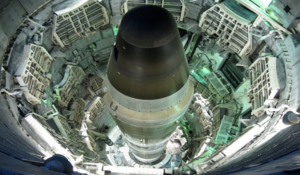The Shape of the Future Operating Environment: How Our Adversaries Have Learned to Stop Worrying and Ignore the Bomb

Author: Bragg, B. (NSI)
Video Preview
In July of this year, at the request of USSTRATCOM, SMA initiated an effort to address eight questions regarding the implications of the increasing numbers, and expanding capabilities, of US nuclear adversaries. This report addresses two of those questions:
[Q2] What are US competitors (Russia, China, Iran, DPRK) doing to shape the operational environment for future conflict?
[Q4] What are the biggest perceived threat to, and opportunity for, the interests of these US nuclear competitors? And what are the internal and external factors currently constraining them from acting on these?
The report is organized around these three overarching concepts – state interest, perceived threats and opportunities, and international activities. The introduction details a theoretical background for each, and explains how, together, they offer a general framework for understanding the choices and behaviors of states in the international system. The concepts implicit in these two questions are complex and interdependent – requiring bounding choices. To stay within the scope of this project while providing a comprehensive mapping of the problem space, we have chosen to provide a high-level overview and comparison of all four states. For readers seeking a deeper dive into specific aspects of these questions for individual states, the reference section at the end of the report includes links to other SMA work with this level of detail. In this report we focus on how understanding these concepts provides a framework for expanding our understanding of deterrence strategy to account for the multi-domain as well as multi-actor nature of contemporary deterrence.
View Video
Comments